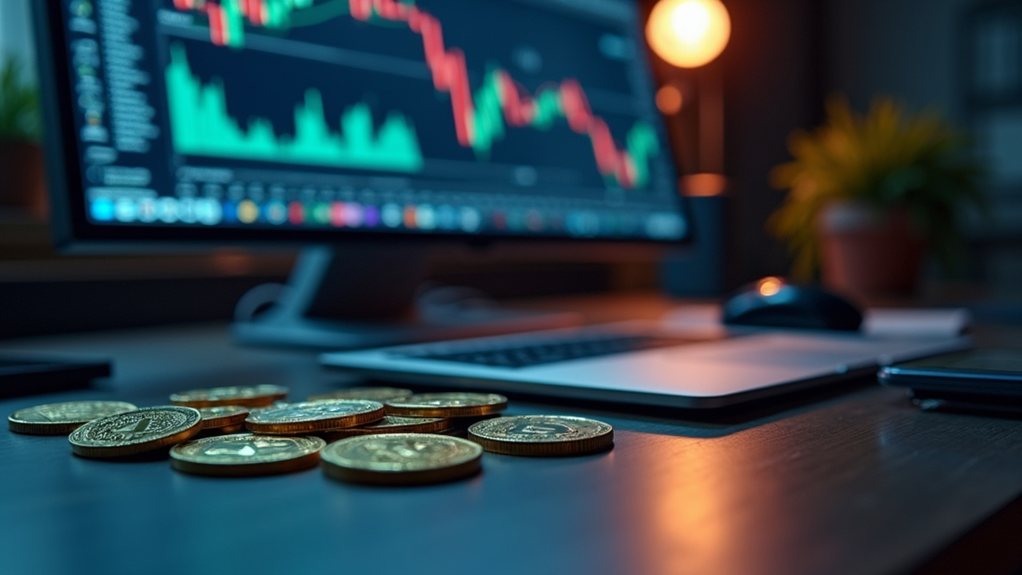OTC (over-the-counter) crypto trading involves direct transactions between two parties without using a public exchange. It's popular for large volume trades that might cause price fluctuations on regular platforms. Traders benefit from privacy, reduced market impact, and faster settlements. High net worth individuals, institutions, and corporations favor OTC trading to maintain confidentiality and avoid slippage. The OTC market presents both unique advantages and specific risks for participants.

The world of cryptocurrency trading stretches far beyond public exchanges. OTC crypto, or over-the-counter cryptocurrency trading, provides an alternative way to buy and sell digital assets. Unlike regular exchanges, OTC trading happens directly between two parties without using a centralized platform. This approach offers unique advantages for certain types of traders.
OTC crypto trading is particularly popular for large volume transactions. When someone wants to buy or sell a massive amount of Bitcoin or other cryptocurrencies, using a regular exchange could cause significant price movements. This problem, known as slippage, happens because large orders can quickly drain the available supply at a given price. OTC trading helps avoid this issue by matching buyers and sellers directly for these big trades.
Large trades move markets. OTC crypto trading bypasses this problem by connecting buyers and sellers directly, eliminating slippage.
Privacy is another important benefit of OTC trading. When transactions occur directly between parties, they don't appear on public exchange order books. This appeals to traders who prefer keeping their activities confidential. High net worth individuals, institutional investors, and corporations often choose OTC trading for this reason.
The OTC crypto market includes several types of trading approaches. In principal trading, an OTC desk takes the opposite side of a client's trade. Agency trading involves the desk simply matching buyers with sellers. Some OTC trades happen through electronic platforms, while others occur through voice trading via phone or messaging.
Large market participants dominate the OTC crypto space. These include hedge funds, cryptocurrency miners who need to sell newly mined coins, and token issuers looking to distribute their assets. Market makers also play a significant role by providing liquidity to the OTC market. The absence of traditional exchange involvement allows for efficient trading without influencing wider market prices.
The trading process typically begins with an inquiry and request for a price quote. Parties then negotiate terms and price, complete necessary know-your-customer checks, execute the trade, and settle by transferring assets. Settlement often happens faster than on traditional exchanges.
Despite its advantages, OTC crypto trading comes with risks. Counterparty risk exists because traders deal directly with each other. If one party fails to fulfill their obligations, the other may have limited options for recourse. Pricing can also lack transparency, and regulatory frameworks for OTC crypto vary widely across jurisdictions. One significant concern is the higher counterparty risk compared to exchanges due to the direct nature of transactions between parties without intermediary oversight.
OTC crypto trading also enables transactions with tokens that aren't yet listed on major exchanges. This provides access to newer or less liquid cryptocurrencies that would otherwise be difficult to trade in large quantities. For token projects and early investors, OTC desks offer a way to buy or sell significant amounts without waiting for exchange listings.
As cryptocurrency markets mature, OTC trading continues to serve as an essential component of the ecosystem, bridging gaps between large traders and providing alternatives to public exchange platforms.
Frequently Asked Questions
What Fees Are Typically Associated With OTC Crypto Trading?
OTC crypto trading typically involves several fee types.
Traders may encounter broker fees, spread fees between buy and sell prices, and custody fees for asset storage. Most providers charge percentage-based fees ranging from 0.1% to 1% of trade value, with rates decreasing for larger volumes.
Some desks advertise zero fees but incorporate costs into quoted prices. Fee structures aren't always transparent, and large traders can often negotiate better rates.
Are OTC Crypto Transactions Reported to Tax Authorities?
OTC crypto transactions are often reported to tax authorities.
In the US, trades over $10,000 must be reported to the IRS, which treats crypto as property for tax purposes. Large exchanges issue Form 1099-K for traders with $20,000+ in transactions and 200+ trades.
OTC desks typically follow KYC/AML procedures, and international reporting varies by country.
Beginning in 2025, a new Form 1099-DA will specifically cover digital assets.
Can Retail Investors Access OTC Crypto Services?
Yes, retail investors can access OTC crypto services, though with limitations.
Several providers offer retail-friendly options: Binance OTC Portal has no minimum trade size, while Kraken requires $100,000 minimum. Coinbase Prime starts at $25,000.
Peer-to-peer platforms like LocalBitcoins and Paxful also provide OTC trading options.
These services typically charge higher fees than exchanges but offer benefits like deeper liquidity, better pricing, and more privacy.
How Quickly Can Large OTC Crypto Trades Be Settled?
Large OTC crypto trades can settle within 24-48 hours typically.
Some desks offer same-day settlement for urgent transactions.
Settlement speed depends on several factors: payment method, asset type, and KYC verification status.
Crypto-to-crypto trades often settle faster than fiat-to-crypto transactions.
Advanced automated systems can reduce settlement time to minutes in some cases.
Blockchain congestion and banking hours may cause delays.
What KYC Requirements Exist for OTC Crypto Platforms?
OTC crypto platforms typically require substantial KYC documentation. Traders must provide government-issued photo ID, proof of address, and tax identification numbers.
Enhanced due diligence applies for large transactions above $10,000. Requirements vary by jurisdiction, with U.S. platforms following FinCEN rules and EU platforms adhering to 5AMLD directives.
Corporate clients face stricter verification processes. Many platforms implement tiered KYC systems that reveal higher trading limits with additional verification.










